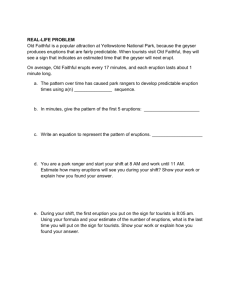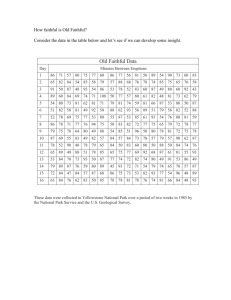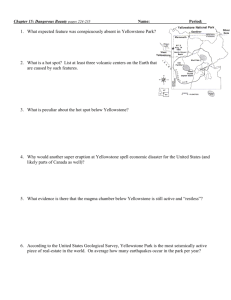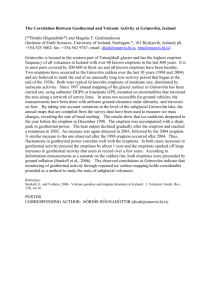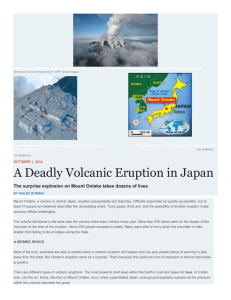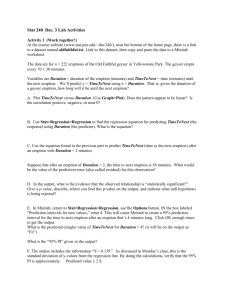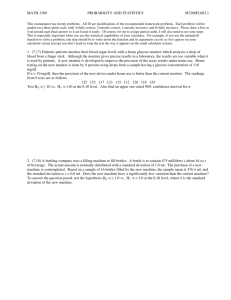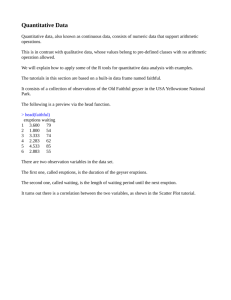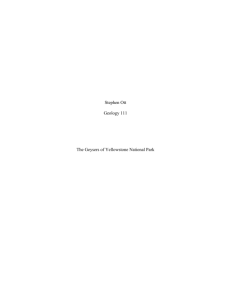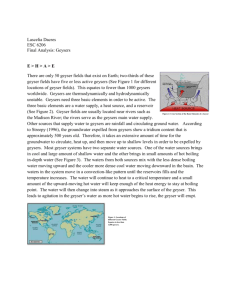Old Faithful
advertisement
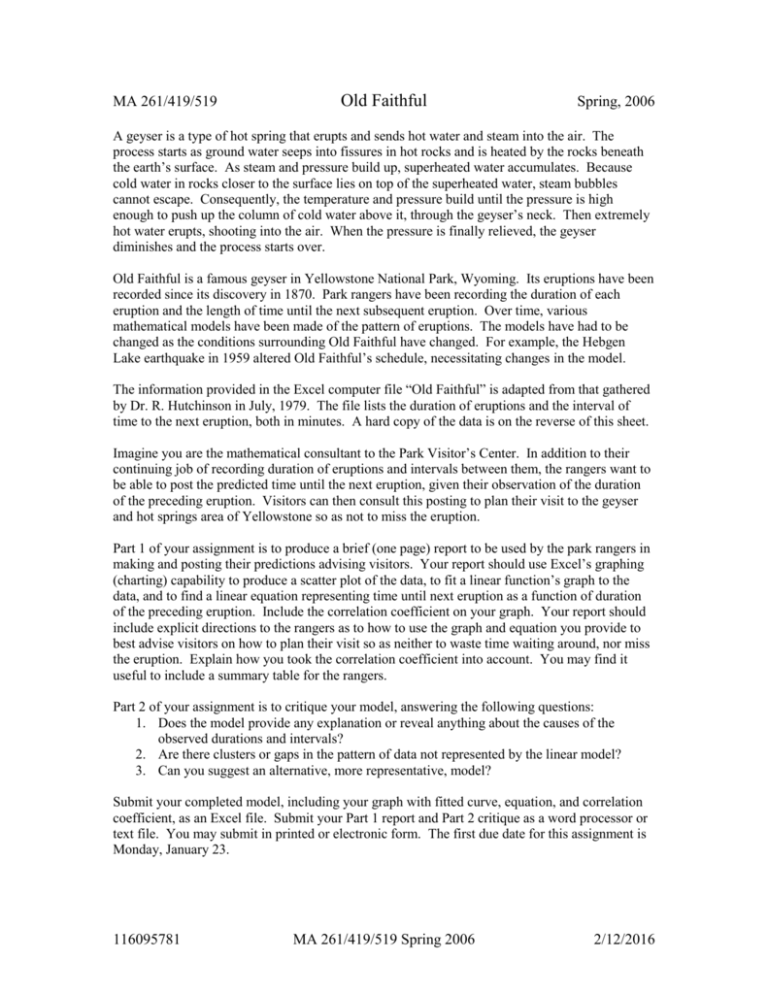
MA 261/419/519 Old Faithful Spring, 2006 A geyser is a type of hot spring that erupts and sends hot water and steam into the air. The process starts as ground water seeps into fissures in hot rocks and is heated by the rocks beneath the earth’s surface. As steam and pressure build up, superheated water accumulates. Because cold water in rocks closer to the surface lies on top of the superheated water, steam bubbles cannot escape. Consequently, the temperature and pressure build until the pressure is high enough to push up the column of cold water above it, through the geyser’s neck. Then extremely hot water erupts, shooting into the air. When the pressure is finally relieved, the geyser diminishes and the process starts over. Old Faithful is a famous geyser in Yellowstone National Park, Wyoming. Its eruptions have been recorded since its discovery in 1870. Park rangers have been recording the duration of each eruption and the length of time until the next subsequent eruption. Over time, various mathematical models have been made of the pattern of eruptions. The models have had to be changed as the conditions surrounding Old Faithful have changed. For example, the Hebgen Lake earthquake in 1959 altered Old Faithful’s schedule, necessitating changes in the model. The information provided in the Excel computer file “Old Faithful” is adapted from that gathered by Dr. R. Hutchinson in July, 1979. The file lists the duration of eruptions and the interval of time to the next eruption, both in minutes. A hard copy of the data is on the reverse of this sheet. Imagine you are the mathematical consultant to the Park Visitor’s Center. In addition to their continuing job of recording duration of eruptions and intervals between them, the rangers want to be able to post the predicted time until the next eruption, given their observation of the duration of the preceding eruption. Visitors can then consult this posting to plan their visit to the geyser and hot springs area of Yellowstone so as not to miss the eruption. Part 1 of your assignment is to produce a brief (one page) report to be used by the park rangers in making and posting their predictions advising visitors. Your report should use Excel’s graphing (charting) capability to produce a scatter plot of the data, to fit a linear function’s graph to the data, and to find a linear equation representing time until next eruption as a function of duration of the preceding eruption. Include the correlation coefficient on your graph. Your report should include explicit directions to the rangers as to how to use the graph and equation you provide to best advise visitors on how to plan their visit so as neither to waste time waiting around, nor miss the eruption. Explain how you took the correlation coefficient into account. You may find it useful to include a summary table for the rangers. Part 2 of your assignment is to critique your model, answering the following questions: 1. Does the model provide any explanation or reveal anything about the causes of the observed durations and intervals? 2. Are there clusters or gaps in the pattern of data not represented by the linear model? 3. Can you suggest an alternative, more representative, model? Submit your completed model, including your graph with fitted curve, equation, and correlation coefficient, as an Excel file. Submit your Part 1 report and Part 2 critique as a word processor or text file. You may submit in printed or electronic form. The first due date for this assignment is Monday, January 23. 116095781 MA 261/419/519 Spring 2006 2/12/2016 Eruptions of Old Faithful Duration of eruptions and interval until next eruption, in minutes. Duration Interval Duration Interval 1.3 58 4 71 1.4 47 4 75 1.5 48 4 76 1.5 50 4 79 1.5 60 4 80 1.6 50 4 82 1.6 50 4 85 1.6 57 4.1 70 1.6 60 4.1 70 1.6 61 4.1 73 2 47 4.1 73 2 48 4.1 80 2 50 4.1 82 2 55 4.1 82 2 58 4.1 84 2.1 48 4.1 86 2.2 50 4.2 78 2.2 78 4.2 79 2.3 50 4.2 84 2.3 63 4.2 86 2.3 68 4.2 90 2.4 57 4.2 90 2.6 58 4.3 75 3.3 70 4.3 75 3.3 70 4.3 76 3.3 72 4.3 76 3.3 75 4.3 80 3.3 87 4.3 82 3.4 72 4.3 85 3.4 73 4.3 86 3.4 75 4.3 103 3.4 76 4.4 73 3.4 77 4.4 76 3.4 78 4.4 77 3.4 80 4.4 80 3.5 73 4.4 81 3.5 80 4.5 76 3.5 81 4.5 85 3.6 75 4.5 87 3.6 77 4.5 88 3.6 84 4.6 85 4 62 5 77 4 68 116095781 MA 261/419/519 Spring 2006 2/12/2016
